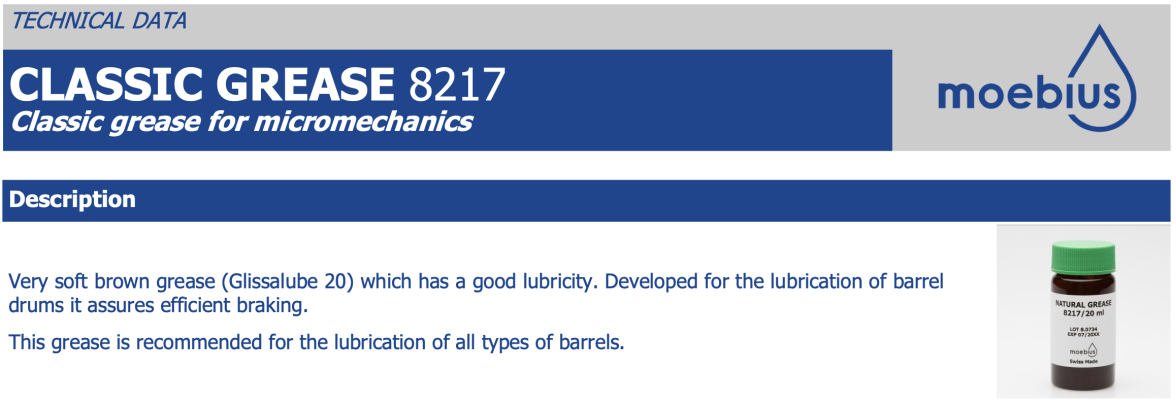sheepdoll
·Back when I worked on the automatics in the 1990s I never heard of breaking grease for the mainspring bridle.
I tried looking this up online, and I can not seem to find the part number to look for at oFrei or the other material houses.
Breaking grease does not seem to return the results I would expect. Not sure if I am spelling it right or what it is really called.
I suspect it is some sort of mobius number.
I tried looking this up online, and I can not seem to find the part number to look for at oFrei or the other material houses.
Breaking grease does not seem to return the results I would expect. Not sure if I am spelling it right or what it is really called.
I suspect it is some sort of mobius number.

